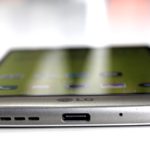Samsung heads into CES 2026 with momentum Samsung Electronics is closing out 2025 with a strong signal of where its future tech ambitions lie….
LG G5 review: jack of all trades, master of few

It must be difficult for smartphone makers to innovate every single year, keeping pace with the changing trends and emerging technologies without sacrificing their own values or design philosophies. Apple is perhaps the only company that’s kept its head consistently above water since 2009, but even the great fruit is running out of ideas. Just look at the iPhone SE if you need proof.
Looking at the LG G5 though — Korea’s latest smartphone — it’s the total opposite. It’s juggling too many ideas to stand out as a refined, considered product.
It ends LG’s run of consistently great flagships too. The G3 was solid step forward from the G2, while the G4 took that base, added some design panache, and bolted on a great camera.
But the LG G5? It’s unlike anything the company has launched before, with two rear cameras on one side, and a modular philosophy on the other. With the latter, it hopes to build its own armada of accessories.

Unboxing
Just to be clear: you’ll get none of those modular or LG Friends accessories in the box. LG wants to sell those to you separately.
You’ll definitely find the following in a retail package though: a USB wall charger that pushes up to 3.0A, a USB-A to Type-C charging and data cable, and a 2800mAh battery. There were no earphones in our press pack (a grave shame really), but that’s to be expected considering the company’s new partnership with Bang & Olufsen.
Design and aesthetic
At least the phone’s exterior isn’t as aesthetically bankrupt. The G5’s a huge departure from the natural curves and leather of the G4, and actually looks more like a G3 successor.
It features smoother, more rounded edge curves, which makes it one of the nicer, more comfortable flagships I’ve held in 2016.

Gone are the G4’s rear volume buttons (which now move to the left side), and in comes a fingerprint reader-cum-home button, with a dual camera array. Both the cameras and fingerprint reader boast unsightly Nexus 5X-like bumps. It’s awfully bulbous for those who like a totally flat phone, but the rise does make it easier to find the fingerprint reader. And to be fair, LG also had to fit the film studio’s worth of camera equipment in the rear too.
Just to be clear: you’ll get none of those modular or LG Friends accessories in the box
Up front, the exuberance peters out. The face is almost entirely black which sneakily makes the screen seem a lot larger than it is. The phone’s chin is the only tinted aspect here, and features the usual LG logo in its centre. The chin also happens to pop out, and hides the battery and the modular-enabling Magic Slot. Cool name, Dumbledore.
We’ll get into deep detail later, but generally speaking, the LG G5 is, visually at least, different to its predecessors without being too ambitious. It’s not going to win any beauty competitions, but it shouldn’t offend too many babies.

Internals and specifications
Internally, the LG uses the Qualcomm Flagship Pack 2016: the Snapdragon 820, with 4GB of RAM and 32GB of internal storage — you’ll find this combo on most flagships this year. The 820 is an eight-core chip, and is one of the fastest pieces of silicon ever used in a smartphone, so those who use it are forgiven.
Along with speed, the chipset brings the usual wireless technologies too including NFC, Bluetooth 4.2, an infrared port, WiFi 802.11 AC, and A-GPS. That’s pretty much everything you’ll likely need on a phone (including a compass and barometer if you often lose yourself).
It’s bat-out-of-hell quick
The screen measures 5.3-inches from corner to corner, and is packed with 2560×1440 pixels as on the LG G4 and G3 before it. Strangely, LG employs an LCD panel and not an OLED here (which would’ve made sense competing against the likes of Samsung),. The LCD sacrifices OLED contrasts for richer colours, but LG also claims that its brighter than the LG G4 in sunlight. That wasn’t my experience at all.
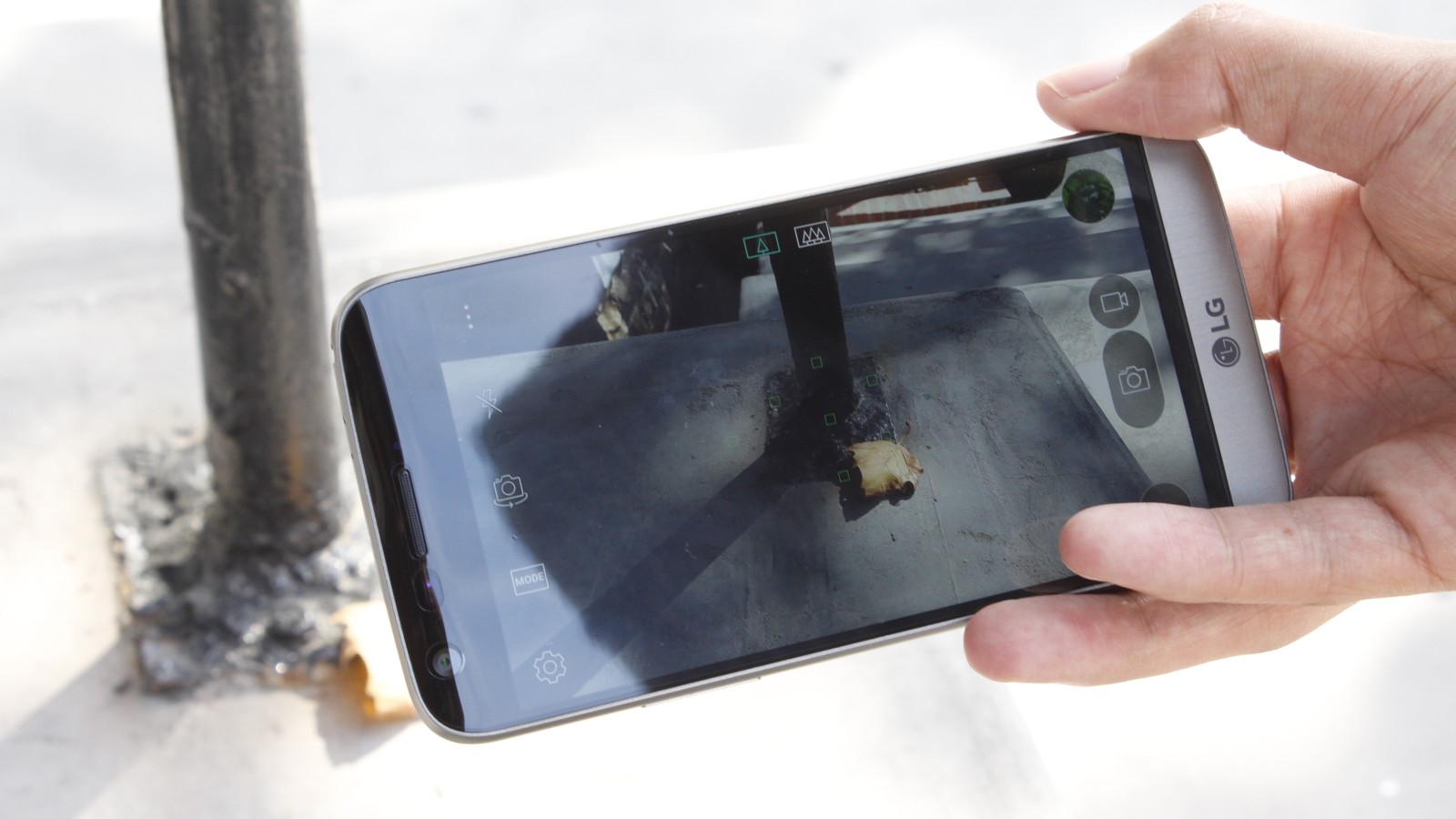
Moreover, with the brighter screen comes a smaller battery. There’s a 2800mAh unit now — reduced by 200mAh over the G4 — but it does come with a USB Type-C port and Quick Charge 3.0, ensuring seriously quick recharge times (less than an hour from 10% to 80%, for instance).
Key numbers:
Dimensions: 149.4mm x 74mm x 7.7mm
Weight: 159g
SIM Type: nano SIM
Display: 5.3-inch, 2560×1440, 554ppi
Chipset: Qualcomm Snapdragon 820 quad-core SoC | dual-core Qualcomm Kryo 2.1GHz & dual-core Qualcomm Kryo 1.5GHz | Adreno 530 GPU | 4GB RAM
Storage: 32GB, microSD card expansion up to 2TB
Imaging: Rear: (Primary) 16MP, f/1.8 aperture, OIS, laser autofocus, LED flash; (Secondary) 8MP f/2.4 aperture, 135-degree wide-angle lens | Front: 8MP, f/2.0 aperture
Video: 4K at 30fps, 1080p at 30fps
Battery: 2800Ah removable
Cool features: Fingerprint reader, always-on display, USB Type-C, modular attachments system
OS: Android 6.0.1 Marshmallow with LG UX 5.0
And tying the package together with a neat bow are the three cameras, notably the dual camera unit on its back.
There are two distinct snappers here: one primary 16MP f/1.8 camera for no-nonsense photography, and a 8MP f/2.4 wide-angle lens camera for capturing images that mimic the angle of the human eye. These are paired alongside a laser focus system, optical image stabilisation and LED flash.
Around the front, LG also includes a rather bright-lens 8MP selfie snapper too which seems to be the same great camera from the LG G4.

Along with the Magic Slot modular system, I can’t complain that LG’s skimping on internals, bat perhaps the battery and screen.
Raw performance
But forgetting that for a second, you want to know how much faster is it than the LG G4, right? To find out, I ran Geekbench simultaneously on both devices. The LG G5 finished the test while the G4 was only 53% through. So in layman’s terms, it’s bat-out-of-hell quick.
This translates through to the real world too. Navigating web pages, content heavy apps like Feedly and Pocket, Sunrise, Facebook, Instagram and another 10-odd apps results in no slow downs, no hiccups, no drama. That’s also thanks to the healthy bank of RAM. I used around 45% on average (at least in my personal usage cases).
Benchmark results:
AnTuTu 6.0.1: 112 536
Geekbench 3.1 Performance: (Single core) 2305 (Multi core) 5404
Geekbench 3.1 Battery: (Total time) 7h47:00 (Score) 3617
GFXBench OpenGL 3.1: (Manhattan 3.0) 1876 frames, 30 per second; (T-Rex) 3109 frames, 56 per second

And even if it’s a smaller battery, personal usage reveals great life too. Running Geekbench’s battery drain benchmark, the phone nearly topped eight hours — easily the best flagship to run this test in my care. It’s an exceptional surprise, and shows the adjustability of the 820.
Along with the Magic Slot modular system, I can’t complain that LG’s skimping on internals
You’ll be able to game on this thing too, especially if you enjoy titles like Gameloft’s Asphalt 8, or more RAM heavy games like Fallout Shelter. Surprisingly, the 820 also doesn’t get too hot while gaming or recording video like its predecessor, and the LG G4’s 808.
But someone who buys this phone won’t care much about the processor, when almost every flagship currently has the 820. So what else does it have?
Cameras
The Primary Camera
Let’s talk about those cameras again.
The 16MP snapper (which I’ll call the primary camera) isn’t as good as I though it would be. After the granular adjustments the LG G4 provided alongside the sharpness of the lens and the savvy of the software, the G5 can’t claim to be better than its older brother in any of these regards. I found it more difficult to bring objects swiftly into focus within 15cm, and fine adjustments thereafter was an unrewarding, tedious process. The phone was delayed to respond to minute adjustments in manual mode, something the LG G4 did brilliantly.
Has LG dumbed down the manual mode? Perceptively, it sure feels like it.
But that’s not to say the LG G5 has a bad primary camera by any means. While some snappers hate absorbing scenes with bright, saturated colours, this is probably the LG G5’s strongest suit. This is also highlighted by the screen’s exceptional colour depth.

Related: What’s the point of LG G5’s two rear cameras?
It also comes into its own when recording hi-res video, notably 4K and slo-mo. Most of our video review of the G5 was shot using the actual phone, so if you need a glimpse into its performance, check that package out. For the most part though, it definitely does video much better than its predecessor. Gold star there.
The Wide-Angle camera
Notably, the 8MP camera beside the primary snapper (which I will call the wide-angle camera) is where things fall apart.
Has LG dumbed down the manual mode? Perceptively, it sure feels like it
LG wants users to imagine that the G5 has one rear camera, and the software provides evidence for this. Zooming in and out of an image by pinching the screen lets the phone swap between the two cameras almost seamlessly. As the wide-angle camera shows more content within a scene, it gives the impression that the user can literally zoom in an out optically. That’s the real reason behind the two snappers, but while it’s novel in theory, it’s just a party trick in practice.
Because of this, users who enjoy using manual mode are left feeling cheated because the software now privileges automatic snapping. If the LG G5 was as quick to focus and precise as the Samsung Galaxy S7, I’d take auto mode and never look back, but it’s not. Additionally, zooming digitally on a smartphone is something that should be frowned upon, at least from an obtaining maximum quality standpoint. The more a user zooms in, the less likely that shot will be as crystal as they’d like. Talk about encouraging bad habits.

Lg G5 Lg G4 Review 2

Lg G5 Review 1

Lg G5 Review 2

Lg G5 Review 3

Lg G5 Review 4

Lg G5 Review 5

Lg G5 Review 6

Lg G5 Review 7

Lg G5 Review 8

Lg G5 Review 9

Lg G5 Review 10

Lg G5 Review 11
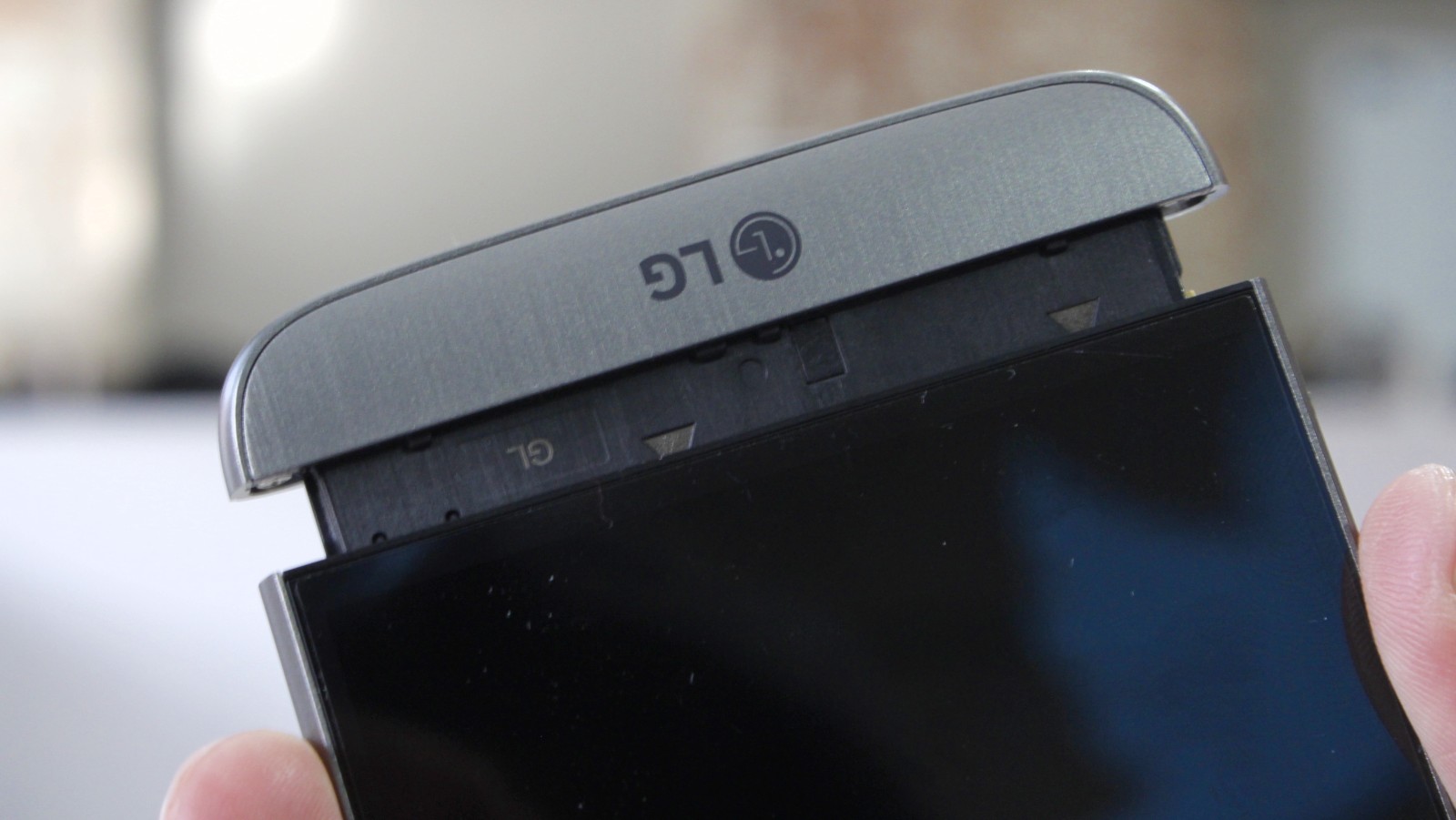
Lg G5 Review 12

Lg G5 Review 13

Lg G5 Review 14
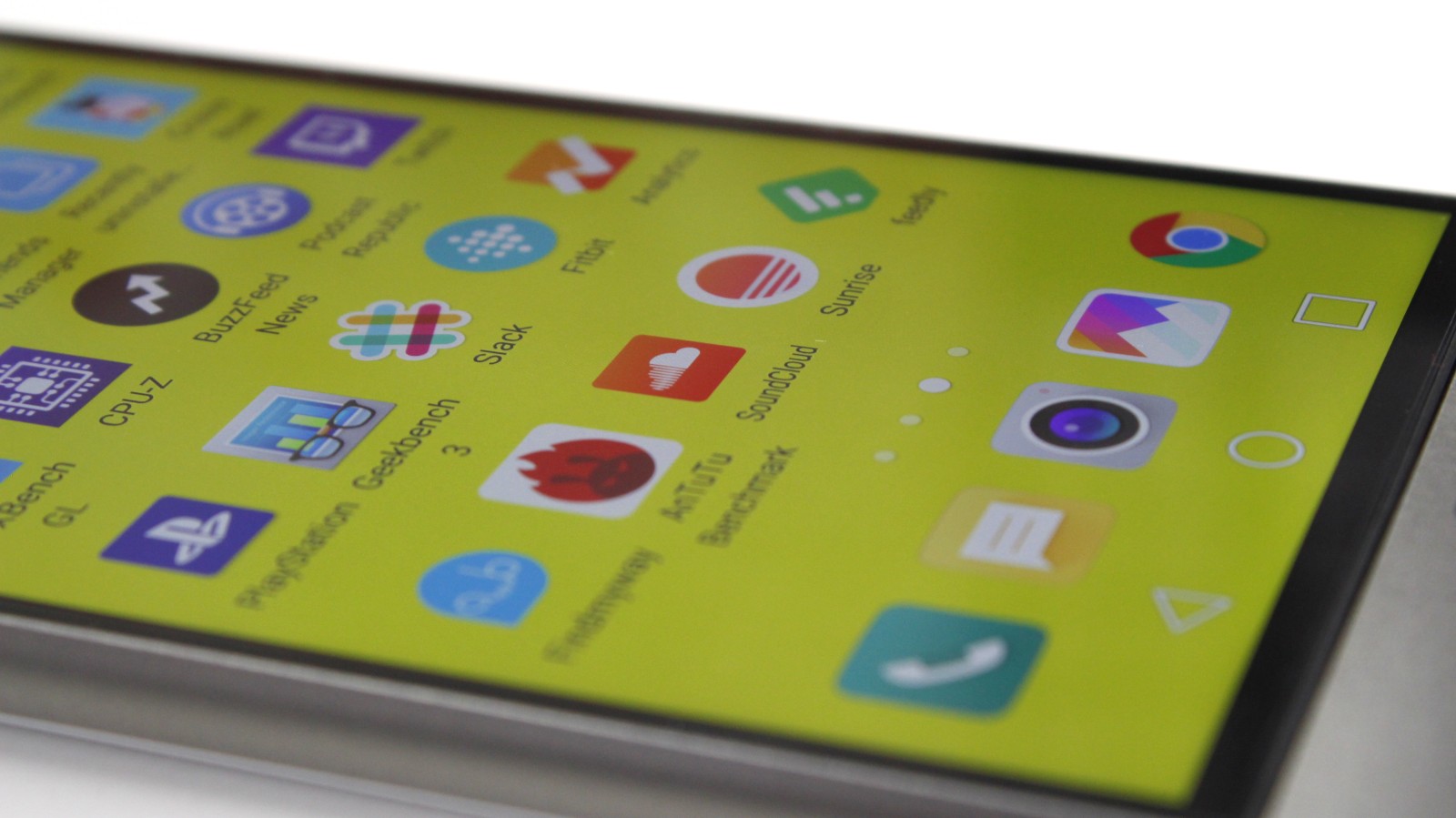
Lg G5 Sample Image 14

One of the strange advantages of the wide angle lens, is getting snaps like this to work.
Lg G5 Sample Image 13

Macro photography just isn't as good on the G5 as previous LGs or its competitors. A great shame.
Lg G5 Sample Image 12

The wide-angle lens struggles with light balance sometimes, but that's thanks to its small f/2.4 aperture.
Lg G5 Sample Image 11

At night, the primary camera isn't bad at all.
Lg G5 Sample Image 10

Another snap of something natural.
Lg G5 Sample Image 9

This was snapped with the primary 16MP camera, and meh, really.
Lg G5 Sample Image 8
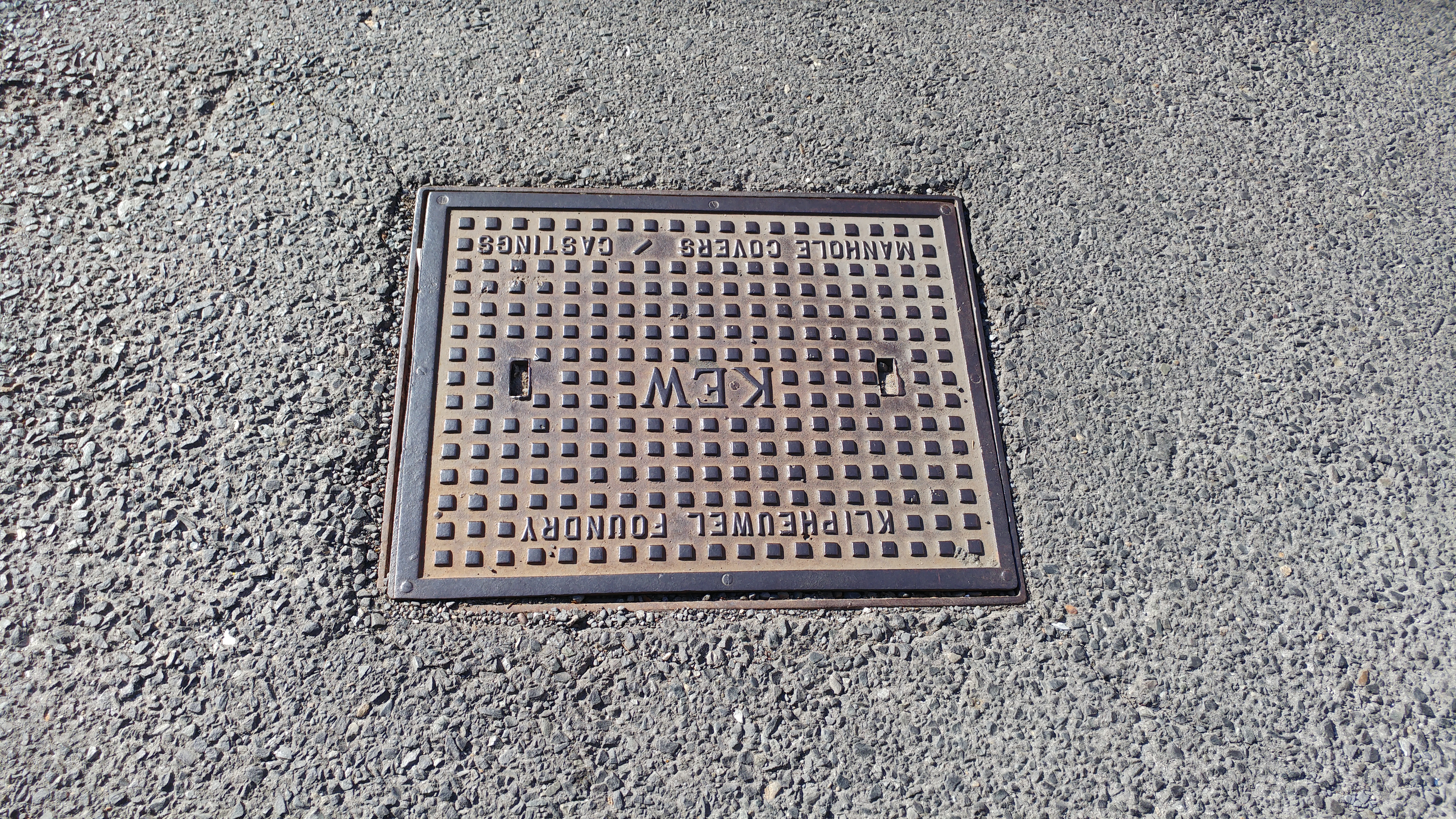
This image is 12MB, incredibly, but as so much detail.
Lg G5 Sample Image 7

A much better close up snap.
Lg G5 Sample Image 6

The colours really pop when using this camera in sunlight.
Lg G5 Sample Image 5

A moving image from a moving train of another moving train. I think the G5 did rather well here.
Lg G5 Sample Image 4 Selfie Hdr

Lg G5 Sample Image 4

Snapping statues in Cape Town CBD wasn't very satisfying at all. Same annoying light issues inherent in this snap as the picture of the OCB steeple.
Lg G5 Sample Image 3

The LG G5's best snap. The wide-angle lens really works well when snapping framed objects, in this case, a framed vista of Cape Town's CBD from the top of the Met Building.
Lg G5 Sample Image 2

This snap doesn't demonstrate much, but it is pretty cool.
Lg G5 Sample Image 1

Another vista. It seems that the wide-angle lens is useful for Cape Town.
Related: Huawei P9 vs LG G5 camera shootout: which mobile snapper is best?
The wide-angle snapper also has an inferior sensor and much smaller aperture than the primary camera, which means images look starkly different, and doesn’t have the same feel when going manual either. The lens also doesn’t do some images justice, with many plagued by noise which can’t really be adjusted thanks to a neutered manual mode.
The annoyances (and what LG could’ve done to solve them)
So here’s the thing: if the wide-angle camera was the front camera, and LG went with just two total cameras, I wouldn’t feel too cheated. But the company’s trying to create a problem to solve with the two rear cameras, and even then it subsequently chose what feels like the cheapest solution. It’s a gimmick that’s useful perhaps less than once a day (its particularly good at capturing buildings, vistas and walkways), but it shouldn’t be the phone’s alpha/omega USP.
Additionally, a much smarter solution would include moving the wide-angle camera to the LG Friends camera module, stripping it as a primary function of the G5. LG could then drop the base price of the phone, focus on the primary camera as the core imager, and encourage people to buy the module with the wide-angle lens. With a lower base price, LG could sell more devices too, undercutting more of its rivals, while giving users incentives to invest in its modular system. And with the wide-angle lens as another option, it would make the module an interesting purchase as well.

As it stands though, if LG allowed each camera to feed off one another — with one supporting the other at all times, rectifying each other’s weakensses much like the Huawei P9 — this might’ve made sense.
Yes, there are picture modes that let users snap an Instagram Layout-like scene, using all cameras on the phone sequentially, but even that doesn’t snap each image at the exact same time. The company also brought a number of social features to the camera, allowing users to share snaps directly from the camera app to Snapchat, Instagram and the like, but it’s only available on auto mode, and its a damn shame, because it’s brilliant for those who want to snap on manual and upload immediately.
The dual-camera setup is fairly redundant during video recording stints too, especially if you record on 4K and jump between the two cameras (which is surprisingly possible). There’s a definitely drop in quality between the two, even if the wide-angle camera lets users record “more” of the scape. Moreover, the resultant video doesn’t seem to be 4K quality either, probably as a result of the dip in quality/information the two differently sized sensors provide.

Inevitably, we have to compare the LG G5’s dual camera system to Huawei’s and even HTC’s One M8. It really doesn’t need to be part of the final retail phone at all. As a separate module? By all means, but this addition doesn’t add enough to the experience of using the phone to be treated as a selling point.
It’s a damn shame, because I really, really wanted to like the idea of dual cameras.
UX, UI and practicality
The phone has its redeeming features, notably that fingerprint sensor. It’s rapid, accurate and adds an extra layer of security that previous LGs were lacking. You can also use it from the always-on screen, which is a nice touch for one-hand users.
USB Type-C is another nice addition, providing a boost in charging times and a marvelous reversible connector. Don’t leave this cable behind though — you’ll probably need it quite often if you interact with your phone using other devices (Note: yes, Bluetooth works well most of the time, but cables are always nice to have).

And on that note, let’s hop aboard the second elephant in the room.
The modular system
As noted before, the LG G5’s chin slides out to accommodate additional modules. These range from a camera add-on (which packs a larger battery, a dedicated camera button, a dedicated video button and a zoom wheel), to a hi-fi audio processor designed by Bang & Olufsen. With the latter, LG wants users to take advantage of the richer audio processing features to play uncompressed audio files. It also features an additional headphone jack.
But these modules are solid separately, and will likely fetch upwards of R1500 each to be extremely conservative.
LG’s also planning a number of other accessories, or other LG Friends, which includes an adorable cat toy, a pocket-sized 360-degree camera and a VR headset. These are also arriving in South Africa in mid 2016, so I wasn’t able to draw a definitive conclusion on each. However, it’s clear that LG is hell bent on building an ecosystem around the G5.

Of course, LG wants users to buy the phone as well as these modules. The company may only craft select modules to cater for their prospective buyers (i.e. Instagrammers will flock to the camera module, for argument’s sake), but these modules make no sense if the phone itself is an unfocused mess.
Also, the G5 is laced with half-baked, strange design decisions
For instance, the camera module only makes sense if it improves the camera functionality in a remarkable way — it doesn’t, not based on my time with it. The Bang & Olufsen music module will appeal to audiophiles likely, but I do wonder how many of these LG will be able to sell.
Moreover, modules aren’t all that easy to a) actually swap out, and b) carry around. Hell, removing the phone’s standard battery module is a task in itself, pinned down using a button on the phone’s one side only. It’s unsightly and esoteric, and removing the actual battery is just as bad.
Ultimately, the module idea could give smartphone users a brilliant future, and one can’t not applaud LG for attempting something this bold this early in the modular present, but the LG G5 feels like an unfinished prototype rather than a ready-for-retail flagship smartphone. We also have to wonder if LG’s planning to continue its accessory line through to the LG G6, because if not, you’ll likely end up dropping cash on accessories that can only be used with the LG G5. Some reassurance would be nice, reassurance that you likely won’t get.

Also, the G5 is laced with half-baked, strange design decisions.
The weird decisions, the half-chances not taken
For example, LG talks up its always-on screen, which allegedly uses only 0.8% of the battery during the day. However, because the screen’s an LCD, and not an OLED, the backlight is constantly on and light bleed around the edges of the screen is worse than my R549 Vodacom Smart Kicka. The screen looks cheap, but I wouldn’t have noticed this if it wasn’t for the always-on system — something LG just had to do after Samsung began talking about it (Note: the first to market with this was Motorola in 2013, so both manufacturers should shut up about this being a feature Nokia was the first to market with this in 2013).
There’s a number of sharp, unpolished edges around the device that feel more like sharp plastic than metal
It feels like a cheap knee-jerk implementation, not a fully considered one. Samsung’s similar system uses an OLED screen, which means that each pixel is lit independently. We’re not sure why LG didn’t go that route — it manufactures a large portion of the world’s OLEDs. I eventually switched it off entirely, but even that feels like a bit of a waste.

The UI has also taken a step backwards. The LG G5 doesn’t feature the usual Android app tray button. Instead, the company’s using a Huawei-like apps bloody everywhere system, which is easily my least favourite thing about Chinese smartphones. The lack of a central button makes it difficult for long-time Android users to adjust, and it’s less efficient for users to find and select apps. I usually install Microsoft’s Arrow launcher almost immediately, but for users who won’t install another launcher, this is a big problem. LG has mentioned that a fix is on the way, but why launch the G5 with this UI in the first place?
The Settings menu is also reworked, and by that I mean made more complicated than it need be. For instance, to change the device-wide PIN — a setting that should be in Security — you have to navigate to Display settings. The system does add a search function, but its all too clear that smartphone makers still haven’t aced this Android Menu thing right.
And finally, let’s talk physical build quality.
Metal or plastic: it doesn’t matter in this case
I slated the BlackBerry PRIV for its lofty price and shoddy workmanship, but the LG G5 comes very close to topping it.
The modular design — and the resultant moving seam — means that the chin never quite sits flush with the main body. There’s always a gap, and on my test device an uneven one. I don’t expect negligence and nonchalant engineering from an established phone company, especially if its phone retails for R11 799. And that’s not all.
There’s a number of sharp, unpolished edges around the device that feel more like sharp plastic than metal. These are particularly noticeable around the headphone port and the bottom chin joints. And speaking of the chin, it also has a fair bit of flex thanks to its attachment system to the phone’s body.

Moving parts is not a good idea on a smartphone in 2016, because manufacturers have forgotten how to make the parts resilient enough.
Value for Money
Finally, the question your wallet’s been waiting for: is it worth it?
Digging deeper into LG’s pricing, you’ll notice that it wasn’t too confident selling the device at the initial R13 999. In a meeting with LG South Africa, the company revealed that R11 799 will be the initial offering price, with the LG Friends and Magic Slot modules a further premium depending on which module or Friend you’re after.
It wants to be too many things: your camera companion; your modular device hub; your stylish, sophisticated smartphone; but it’s ultimately bits and piece of these
While I do think the R2 200 price reduction is a welcome respite, the phone’s still too expensive in relation to its rivals, especially considering that its rivals are more polished, better executed products.

Now that the Huawei P9 is heading to SA soon, and the Samsung Galaxy S7 is already here for around R12 999 RRP, it’s hard to see the LG G5 competing against these devices on merit. And I haven’t even mentioned the rock solid Apple iPhone 6S yet.
Main competition
Apple iPhone 6S 16GB: R13 499 (Takealot)
LG G5: R11 799 (RRP)
Samsung Galaxy S7: R11 315 (Orange)
Huawei P8: R10 495 (ZEEK)
Sony Xperia Z5: R7950 (Orange)
LG G4: R6255 (Orange)
Note: Prices as of time of writing. All models 32GB unless otherwise stated.
Yes, the LG G5 is the boldest statement made by a smartphone maker this year. And yes, it was a truly gawk-worthy, hype-mining prospect at its launch in Barcelona in March. But in practice, its a device that doesn’t really know what it wants to be. It has an identity crisis. It wants to be too many things simultaneously: your camera companion; your modular device hub; your stylish, sophisticated smartphone; but it’s ultimately bits and piece of these.

Note: The LG G5 (left) was in power-saving mode when this shot was taken alongside the LG G5, so don’t use this as an adequate portrayal of its screen brightness.
LG has proven that it can craft smartphones that are stylish, different from the crowd and boast seriously great optics. Hell, it did that just last year. But the LG G5 is unfortunately its most disappointing flagship in some time.
If you have R11 799 sitting in your back pocket, look elsewhere for a more complete, more refined smartphone.
Positives
- More ergonomic than most large flagships
- Ludicrously quick in general use and gaming
- Occasionally great primary and selfie cameras, especially for video
- Modular system has yet-to-be-realised potential
- Quick Charge 3.0 means no more overnight charging
Negatives
- It’s not the best looking phone or 2016 at all
- Build quality and refinement is nonexistent
- New camera setup nerfs manual mode, places emphasis on auto mode
- UI has taken a Huawei-step backwards
- Steeply priced, considering LG wants users to buy additional modules
Verdict: The LG G5 could’ve been extraordinary, but ultimately fell under the weight of its company’s own cloudy vision and poor execution. Kudos to LG for taking that leap, but modules sold separately after launch shouldn’t be the selling point of a smartphone at launch. If the modules do in fact add value to the experience, I’ll happily update this review with my revised opinion. For now, this flagship is redeemed only by its astonishing raw performance and video recording prowess. Still, if you still want to marry this phone for its claimed selling points, be prepared to live with its inconsistencies.
Score: 6/10














